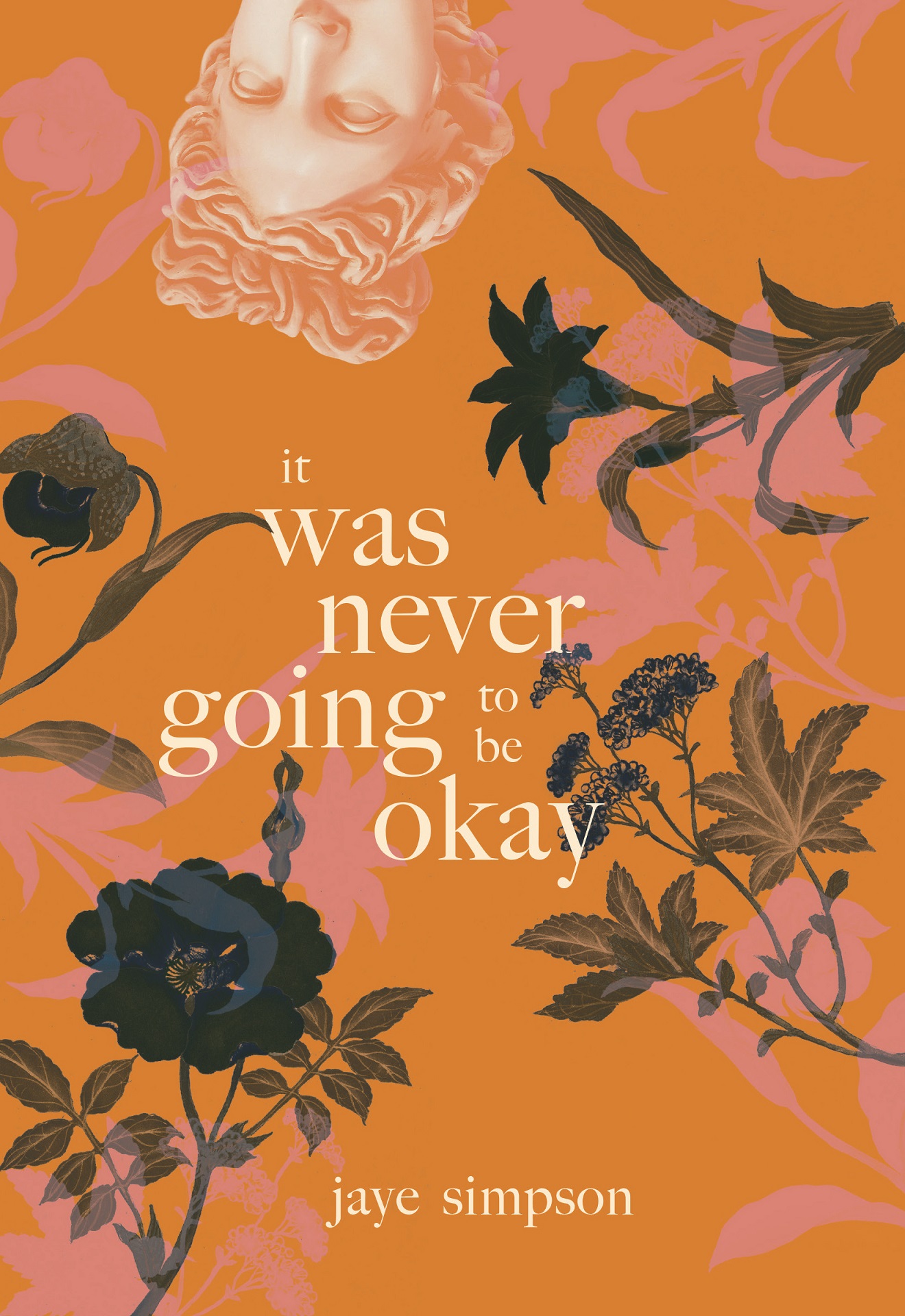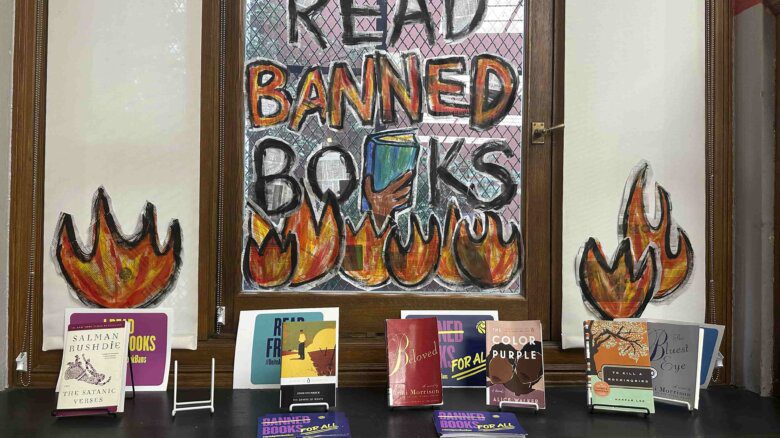Poet jaye simpson doesn’t need you to like them. When I call simpson on the phone in late May, they are sitting on their porch after a thunderstorm, a rare phenomenon for Vancouver. I intend to ask them questions about the craft aspects of writing that trans Indigenous writers don’t often get the opportunity to answer. As simpson mentions during our conversation, Indigenous writers are often expected to represent their communities and speak to political issues that are in the news. Like two aunties gossiping, our conversation quickly turns to discussing the complicated nature of intersecting trans and Indigenous politics, surveillance of Indigenous peoples on social media and harm caused by appropriation, racism and transphobia.
“I just love the smells and the energy in the air,” they tell me. Like the thunderstorms that frequent the living skies from the places they call home, a Prairie NDN (a preferred term for Indigenous youth on Twitter and Instagram) like simpson displaced on the west coast is also rare. simpson’s first book, it was never going to be okay, is a homage to a childhood cut short by the Canadian foster care system. It is the testimony of a spirit made fierce by a wounded child’s necessity to survive. simpson’s writing represents a trans NDN poetics of healing by giving birth to creative life and healing others with that offering.
“My art is my children,” says simpson, “because it will be held by many hands.”

simpson doesn’t need you to like them because they possess the old soul of someone who had to learn to love and protect themselves in a world that refused to. I ask what their favourite poem from their collection is today—not forever or even tomorrow—just in this moment. “The very last poem in the collection, ‘about the ones i want to love,’ it was one of my favourites,” simpson says. “The poem has a lot of shadow work in it and requires a lot of the inner child. It’s a poem dedicated to my feelings, so I can be present to folks alongside me. It’s a dedication to my survival and hope that it will help others.” Analytical psychology’s shadow work—wherein one connects with one’s inner child to re-parent and care for oneself in ways that family structures may not have—has gained popularity on TikTok, where youth act as peer educators and share resources for self betterment.
In “about the ones i want to love,” a grown simpson speaks to themselves as a child.
what did i expect / to happen when i tried to love & / my heart was buried ten / years ago / by a house that was never home?
The legacies of Canada’s residential school system, including the 215 children in unmarked graves at the former Kamloops Indian Residential School on the Tk’emlúps te Secwe̓pemc First Nation, are felt throughout the Canadian foster care system. There are now more Indigenous kids in care than at the height of the residential school system, which officially operated from the 1880s to 1996. But stories like the ones simpson shares in their collection are often missed, particularly amidst the sensationalist conservative discourse about the online activism of NDN youth.
simpson tells me about the importance of the internet and social media for making space for holistic representations of queer and trans Indigenous young people. “Just because I may not approach things in a palatable way, grounded in respectability politics, doesn’t mean that what I have to say isn’t important,” they argue.
Conservative writers such as Quillette’s Jonathan Kay obsessively demonize a generation of NDN youth for their public activism regarding racial inequity on platforms such as Twitter. However, the internet’s quick and free share of information and images has provided a space for youth activist artists like simpson to defy negative representations perpetuated by conservative Canadian media. When the RCMP raided Wet’suwet’en, where land defenders have been opposing a pipeline, simpson was one of the Indigenous youth in Vancouver who held blockades at prominent intersections. They called attention to the violent arrest of land defenders and humanized Indigenous youth to a public that has historically framed Indigenous land defence in a negative light (like during the 1990 siege of Kanehsatà:ke that saw Quebec police, the RCMP and the Canadian Army, sent by the province’s government, antagonize, arrest and injure Mohawk defenders who were trying to stop a development project on the unceded territory, known in Canadian media coverage as the Oka Crisis).
simpson’s community and activist work is accompanied by an artistic and literary practice that parallels the audacious expressions of post-relatability in CanLit—a form of expression that propelled simpson’s colleagues, such as Arielle Twist, Billy-Ray Belcourt and Joshua Whitehead, to fame. Faced with categories in publishing that expect Indigenous peoples to segment themselves within markets like “trans” and “Indigenous” literature, Indigenous queer and trans writers have begun favouring honest representations of themselves and their communities instead. Though still considered an emerging writer, simpson has already received acclaim: their first collection is a finalist for the Writer’s Trust Dayne Ogilvie Prize for LGBTQ2S+ Emerging Writers, an Indigenous Voices Awards in the poetry category and a was nominated for aReLit in Poetry award. By now, they are already wise to the difficulties of being anything other than a straight white person in CanLit. When I congratulate simpson on the publication of their book and asked how it’s doing, they point to the difficulties of publishing markets in Canada for trans and/or queer Indigenous writers.
“There’s this criticism in Indian Country, where our voices have to represent all. Dissenting views become ‘bad’ representation.”
“My collection is doing really well in the U.S.,” simpson says. “But there’s a dissonance between the U.S. and Canada; it speaks to the marginalization of Indigenous trans and queer voices in Canada. In the U.S., I’m in lists, articles, reviews and being mentioned by bookstores. Parts of my identity are hindering the success of my book [in Canada] because it’s either too niche or not relatable enough. And I think that speaks to the consumption of Indigenous and queer voices in CanLit because we have to be relatable in order to be listened to. Then there’s this criticism in Indian Country, where our voices have to represent all. Dissenting views become ‘bad’ representation.”
“Are you saying that there hasn’t been space for trans voices in Indigenous literature in Canada?” I ask.
“I don’t think the space is there yet. Aiyyana Maracle and Arielle Twist have done so much work. But, at the same time, Aiyyana, Arielle and myself are the vanguard of these voices,” says simpson. “That’s heavy because there’s this perception and expectation for us to perform within the cisgender and heterosexul norms [in Indigenous literature and CanLit]. And when you don’t, there’s a rejection of who we are. It’s been exceptionally difficult. The space taken up by [trans writer] Gwen Benaway [whose claims to Indigeneity have been challenged] has been devastating.”
simpson is alluding to an issue with many complex layers; the difficult nature of challenged Indigenous identity claims must be considered with care. In the United States, Indigenous activist and writer Jaqueline Keeler recently released an extensive “alleged pretendian” list that includes individuals in academia, literature and the arts who she claims are falsely identifying as Indigenous people. The list was heavily critiqued by Indigenous communities on Twitter and characterized as underresearched, anti-Black and an egregious form of lateral violence. In Canada, several prominent figures, such novelist Joseph Boyden, have falsely claimed Indigeneity based on shoddy ancestry myths that helped them gain opportunities and resources, including grants meant for Indigenous artists.
In June 2020, Indigenous writers Alicia Elliott, Terese Mailhot, Nazbah Tom, Joshua Whitehead and Tyler Pennock published a public letter calling on Benaway to “clarify her connections, if any, to specific Indigenous nations and communities that would allow her to label herself an Indigenous writer.” While Benaway did eventually respond, her connections to an Indigenous community were not clarified to many people’s satisfaction and she has since kept a low profile. simpson takes issue with how Benaway, once nominated for the Dayne Ogilvie award herself, used an unestablished connection to Indigenous identity and appropriated identity to promote her career. simpson argues that the damage she created within Indigenous literature feels irreparable because of the transphobia she surfaced within Indigenous communities. As I tell simpson during our conversation, “It hurts to have your identity appropriated. But it also hurts when Indian Country piles onto a single figure to double down on transphobia.”
“Cancel culture is dangerous, but also it’s important.”
A great deal of internal confusion comes up for simpson and myself as we discuss the complexities of being hurt by Benaway and a trans literary community that supported her until the bitter end, while also being hurt by an Indigenous community who would use what happened with Benaway to infer that all trans Indigneous peoples are fakes. simpson and I have too much grace to publicly say the names of the Indigenous deans, filmmakers and writers who seem all too eager to jump on any opportunity to propose that all trans Indigneous peoples are not Indigenous; trans NDN kinship is protecting yourself while still doing everything in your power to protect the people hurting you.
“Those inferences are 100 percent based on transphobia,” simpson replies, “but, specifically, transmisogyny.”
“Indigenous peoples all just live in fear of being cancelled by each other right now,” I agree, “which is ironic because of the themes of kinship in queer, trans and Indigenous literatures.”
simpson is quick to remind me of how social media afforded them a platform for dissent in the first place, not wanting to conflate all community conflict online with lateral violence. “Cancel culture is dangerous,” they say. “But also it’s important. There’s a lot of folks who don’t have the resources and support to do mindful mediation. Sometimes a call out will actually save trans people.”
Reflecting on the dual positioning of Benaway in Indigenous and trans literatures while recognizing how the conflicted nature of identity-based industries make an uneasy fit for all those who occupy intersecting identities, I asked simpson what their experience of trans literature has been.
“I don’t have my own language to describe how I feel yet in my own Indigenous language. So I feel like I’m currently residing in this trans sphere, but I don’t want to.”
“The trans literature that is published and talked about widely is often by white folks,” they say. For simpson, there are many positive examples of Indigenous representation in trans literature. Books such as Detransition, Baby by Torrey Peters exhibit a self awareness on the part of the writer in regards to the disproportionate violence Black and Indigenous trans peoples experience. Though not written by an Indigenous person, Casey Plett’s book Little Fish was monumental for simpson because it was the first time they encountered a narrative about a trans Indigenous woman where she didn’t die at the end.
However, simpson still struggles to identify with a dominant ordering of trans community, theory, art, literature and politics. “I don’t identify within the colonial gender structure. The way that I came to know the word ‘trans’ [as someone with a history of working in public health and social services] was in its use to classify folks who were not men in HIV statistics,” they say. “This word that we’re using to define ourselves was made to classify us in how we were dying. That said, I don’t have my own language to describe how I feel yet in my own Indigenous language. So I feel like I’m currently residing in this trans sphere, but I don’t want to.”
simpson moves through the literary industry with a wisdom beyond their years. They embody deep intergenerational knowledge of both trans and Indigenous literatures, and birth creations they hope will muddy those distinctions and heal the binaries of colonial institutions for future generations. I know I am so appreciative to bb jaye, who I love very much for surviving.


 Why you can trust Xtra
Why you can trust Xtra


